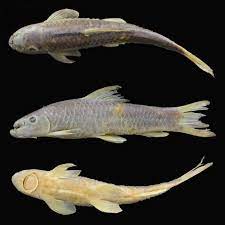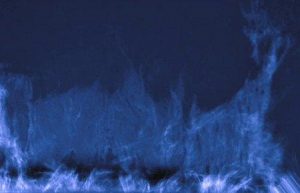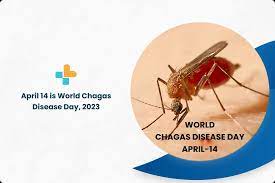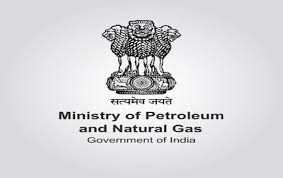Today’s Current Affairs: 18th Apr 2023 for UPSC IAS exams, State PSC exams, SSC CGL, State SSC, RRB, Railways, Banking Exam & IBPS, etc
Table of Contents
Olkiluoto 3 Nuclear Reactor:

Finland’s next-generation Olkiluoto 3 nuclear reactor, the largest in Europe, has gone into regular production.
- Olkiluoto 3 nuclear reactor (OL3 )is an EPR (European Pressurized Water Reactor) located in Finland.
- It is built by the French-led Areva-Siemens consortium.
- It is the most powerful nuclear reactor in Europe, with a capacity of generating 1,600 megawatts.
- It covers approximately 14% of Finland’s electricity demand.
Epstein-Barr Virus:

A recent study shows that Epstein-Barr virus that is primarily spread through saliva can evolve into cancer.
- Epstein-Barr virus (EBV) is one of the most common human viruses in the world.
- It spreads through bodily fluids, especially saliva (spit).
- Symptoms: Fatigue, fever, inflamed throat, swollen lymph nodes in the neck, enlarged spleen, swollen liver, rash.
- EBV can cause infectious mononucleosis, also called mono, and other illnesses.
- There is no vaccine to protect against EBV infection.
G7 Ministers Meet:

The G7 countries pledged to quit fossil fuels faster and urged other countries to follow suit, but failed to agree to any new deadlines on ending polluting power sources like coal.
- G7 is an intergovernmental organisation of leading industrialised nations formed in 1975.
- Member countries: Canada, France, Germany, Italy, Japan, the United Kingdom and the United State.
- It meets annually to discuss issues such as global economic governance, international security, and energy policy.
- The host of the G7 summit, also known as the presidency, rotates annually among member countries.
- It was formerly referred to as the G-8 until Russia was suspended from the group in 2014 after annexing Crimea.
- As of 2022, G7 countries make up 10% of the world’s population, 31% of the global GDP, and 21% of global carbon dioxide emissions.
Garra Laishrami : New Species

Researchers from the Central University of Odisha (CUO) and the Zoological Survey of India (ZSI) have recently found a rare freshwater fish in the Koraput district.
- Garra Laishrami is a new cyprinid fish species of the Garra genus found in the Kolab River.
- These are characterised by the presence of a gular disc developed from tissues of the gular region that exhibit variation in the size, shape, and arrangement of the snout tubercles.
- It is usually found under rocks, stones and boulders of torrential streams and rivers.
- Geographical distribution: Borneo, southern China and southern Asia through Middle East Asia, Arabian Peninsula and East Africa to West Africa.
Polar Crown Prominences:

An Argentina-based astronomer captured a structure that looked like a wall of plasma on the surface of the sun.
- Polar crown prominences (PCP) are similar to normal solar prominences, which are loops of plasma, or ionized gas, that is ejected from the solar surface by magnetic fields.
- They occur near the sun’s magnetic poles at latitudes between 60 and 70 degrees North and South,
- Due to the much stronger magnetic fields near the poles they collapse back towards the sun.
- This collapse back to the sun has earned them the nickname “plasma waterfalls.”
- Solar prominence is a large, bright feature extending outward from the Sun’s surface.
- These are anchored to the Sun’s surface in the photosphere, and extend outwards into the Sun’s hot outer atmosphere, called the corona.
- It forms over timescales of about a day, and stable prominences may persist in the corona for several months, looping hundreds of thousands of miles into space.
- The red-glowing looped material is plasma, a hot gas comprised of electrically charged hydrogen and helium.
FAO : Report

The FAO (Food and Agriculture Organization) has released a report titled- “The Status Of Women In Agrifood Systems” highlighting the importance of Gender Equality in the Agricultural Sector.
Key Highlights of the Report:
- Women make up a significant proportion of the agricultural workforce, accounting for around 40% of the global agricultural labor force. However, women often face significant gender-based barriers that limit their access to resources, technology, and markets, which can impact their productivity and income.
- Even though women have gained more access to some resources, such as digital technology and financial services, over the last several years, the gaps are either unchanged or growing in far too many areas, especially for rural women.
- Since the outbreak of Covid-19, the gap between women’s and men’s Food Security has grown to 4.3% — with significantly higher food insecurity among rural women.
- Despite the importance of agri-food systems for women’s livelihoods and the welfare of their families, women’s roles tend to be marginalised and their working conditions are likely to be worse than men’s — irregular, informal, part-time, low-skilled, labour-intensive and thus vulnerable
Food and Agriculture Organization:
- FAO is a specialised agency of the United Nations that leads international efforts to defeat hunger.
- World Food Day is celebrated every year around the world on 16th October. The day is celebrated to mark the anniversary of the founding of the FAO in 1945.
- It is one of the UN food aid organisations based in Rome (Italy). Its sister bodies are the World Food Programme and the International Fund for Agricultural Development (IFAD).
World Chagas Disease Day 2023:

The World Health Organisation (WHO) observes World Chagas Disease Day every April 14th to raise awareness about the little-known disease that affects millions of people, especially in Latin America.
- The 72nd World Health Assembly dedicated this day to the disease in 2019.
- This year’s theme is “time to integrate Chagas disease into primary health care”.
- Chagas disease, also known as “silent or silenced disease”, is a communicable parasitic disease that infects 6-7 million people and claims around 12,000 lives every year worldwide, according to WHO.
- The disease is named after physician Carlos Chagas who first detected it in a Brazilian child in 1909.
- It is caused by the protozoan Trypanosoma cruzi, transmitted by a family of bugs called ‘triatomines’ or ‘kissing bugs’ that infect healthy individuals through bites or defecation.
- It can also be contracted through congenital transmission, blood transfusions, organ transplantation, consumption of uncooked food contaminated with fecal matter of infected bugs, or accidental laboratory exposure.
- It cannot propagate by casual contact with infected humans or animals.
- Symptoms:
- The disease manifests as fever, headaches, rashes, inflammatory nodules, nausea or diarrhea, and muscle or abdominal pain. 4
- 70-80% of patients show no symptoms throughout their lives, making early detection challenging.
- 20-30% of infections evolve into the chronic stage, causing damage to the heart, digestive system, or nervous system.
Magnetoresistance:

The researchers in the UK, have found that graphene displays an anomalous giant magnetoresistance (GMR) at room temperature.
- Magnetoresistance is a phenomenon where the electrical resistance of a conductor is affected by magnetic fields in adjacent materials.
- When the materials are magnetised in the same direction, the electrical resistance in the conductor is low.
- When the directions are opposite each other, the resistance increases.
- The magnetoresistance observed in the graphene-based device was found to be “almost 100 times higher than that observed in other known semimetals in this magnetic field range.”
- It is used in hard disk drives and magnetoresistive RAM in computers, biosensors, automotive sensors, microelectromechanical systems, and medical imagers.
- GMR-based devices are particularly used to sense magnetic fields.
Global Conference On Compressed Biogas:

The global Conference on Compressed Biogas is to be held in New Delhi soon.
- Global Conference on Compressed Biogas is organized by the Ministry of Petroleum & Natural Gas.
- The theme of the conference is – Towards Progressive Policy Framework for a Robust CBG Foundation and Growth.
- The objectives:-
- to apprise the industry regarding the initiatives taken by the government of India for the development of compressed biogas industry and
- to identify the areas where policy modifications are required.
- India is dedicated to achieve a net zero target by 2070 and the government has taken several initiatives to reduce emissions.
- Compressed Biogas (CBG) has higher calorific value and properties similar to CNG.
- It can be utilized as alternative green renewable and can replace CNG in automotive, industrial and commercial areas, given the abundance of biomass availability within the country.
- The discussion will focus on the feedstock availability, CBG offtake, fermented organic manure, carbon credits, incentives, investment and financing for the CBG industry and biofuel policies of different states + CBG producers on state policies & international experiences.
- TERI, NAMA Facility, Deutsche Gesellschaft für Internationale Zusammenarbeit (GIZ) GmbH and LCB Forum (Low Carbon Biofuel Forum), Greece are the institutional partners.
- Indian Oil Corporation, Verbio India, Canara Bank, IndianOil Adani Ventures Limited – IAV Biogas, SBI Capital, SIDBI, Praj Industries and Maschinenfabrik Bernard KRONE GmbH are also supporting this conference.




